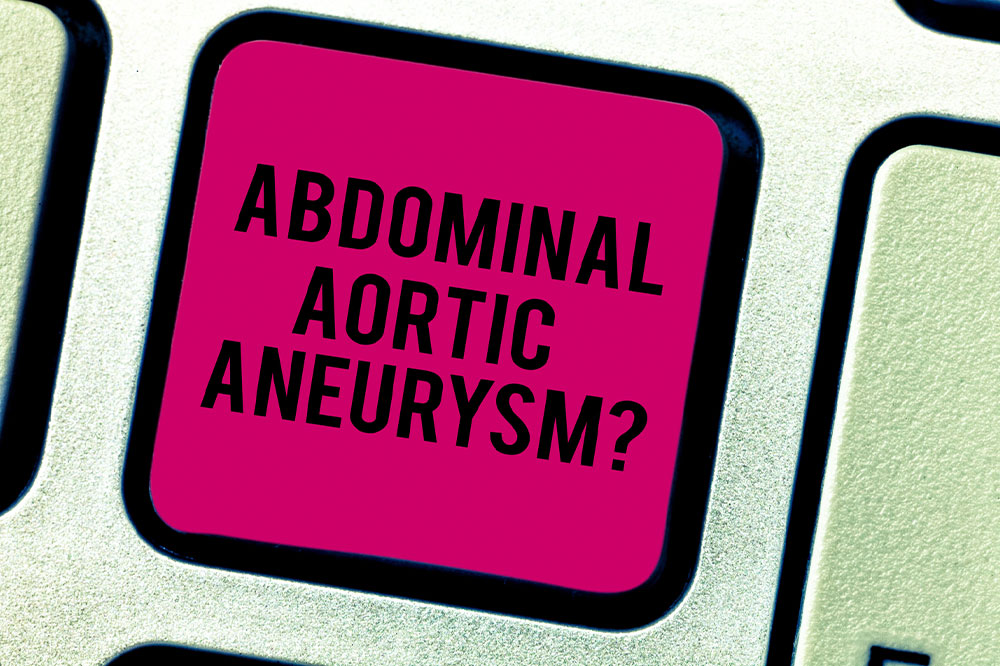
A comprehensive guide to abdominal aortic aneurysm
An abdominal aortic aneurysm (AAA) is a potentially life-threatening condition. It develops when the large blood vessel that supplies blood to the abdomen, pelvis, and legs , known as the abdominal aorta, becomes enlarged and weakened. If left untreated, an AAA can rupture, leading to severe internal bleeding and posing a significant risk to the individual’s health. Understanding the diagnosis, treatment options, and recovery process is crucial for managing this condition effectively.
Causes
The exact cause of abdominal aortic aneurysm (AAA) is not completely understood, but several factors are believed to contribute to its development. The primary cause of AAA is the weakening of the walls of the abdominal aorta, which leads to its enlargement and the formation of an aneurysm. Age, Atherosclerosis, high blood pressure, and connective tissue disorders are some of the probable causes of AAA.
Symptoms & diagnosis
An abdominal aortic aneurysm often develops without causing noticeable symptoms, making early diagnosis challenging. Abdominal or back pain, pulsating sensation in the abdomen, abdominal tenderness, feeling full or bloated, loss of appetite, or unintended reduction in BMI can be signs of AAA. Regular screenings, such as ultrasound examinations, are recommended for individuals at higher risk.
If an AAA is suspected, your healthcare provider may ask for diagnostic tests to confirm the diagnosis and determine the size and location of the aneurysm. These tests may include ultrasound, CT scan, or MRI. Once the diagnosis is confirmed, further evaluation is needed to assess the risk of rupture and determine the most appropriate course of treatment.
Treatment options
The treatment approach for an abdominal aortic aneurysm depends on various factors, including the size and location of the aneurysm, the individual’s overall health, and the risk of rupture. There are two primary treatment options: watchful waiting and surgical intervention.
- Watchful waiting
For smaller aneurysms that are not causing symptoms and have a low risk of rupture, watchful waiting may be recommended. This involves regular monitoring of the aneurysm through periodic imaging tests to track its size and detect any changes. Lifestyle modifications, such as managing blood pressure, and maintaining a healthy BMI, are essential during this period to minimize the risk of aneurysm growth. - Surgical intervention
Surgical intervention may be necessary to prevent rupture if the aneurysm is large, rapidly growing, or causing symptoms. The most common surgical procedures for AAA include open abdominal repair and endovascular aneurysm repair (EVAR). - Open abdominal repair
This traditional surgical approach involves making an incision in the abdomen to access the aneurysm and replace the weakened portion of the aorta with a synthetic graft. Recovery from open abdominal repair typically involves a longer hospital stay and a more extended healing process. - Endovascular Aneurysm Repair (EVAR)
EVAR is a minimally invasive procedure in which a stent graft is inserted into the aorta through small incisions in the groin. The stent graft reinforces the weakened vessel walls, diverting blood flow from the aneurysm and reducing the risk of rupture. EVAR is associated with shorter hospital stays, quicker recovery time, and lower complication rates compared to open abdominal repair.
This is a serious health condition that requires prompt diagnosis and appropriate treatment to prevent rupture and its potentially life-threatening consequences. Regular screenings, understanding the treatment options available, and adhering to a comprehensive recovery plan are essential for managing this condition effectively.




